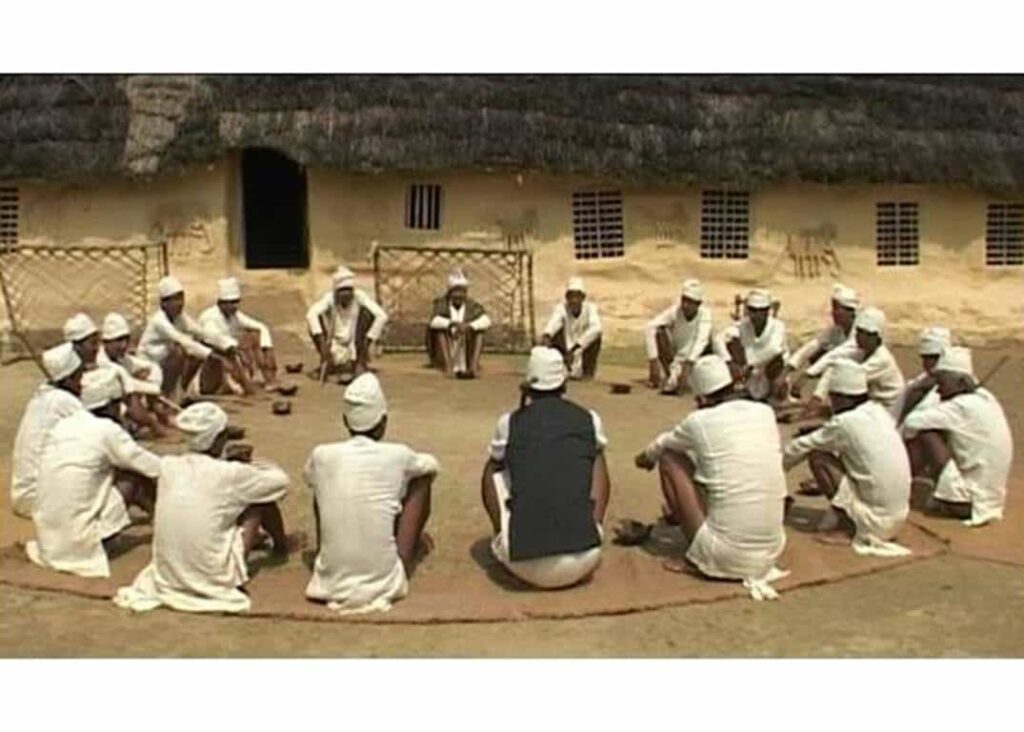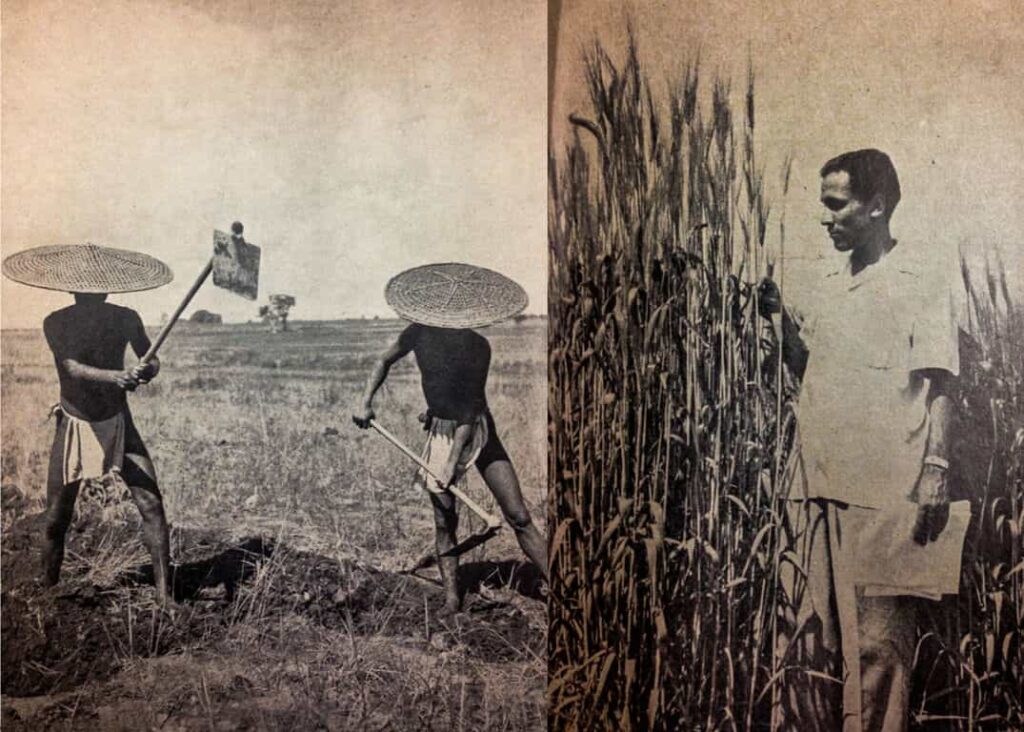The Tharu people are an indigenous ethnic group inhabiting the Terai region of southern Nepal and India. They communicate through the Tharu language and have been officially recognized as a nationality by the government of Nepal.
In the Indian Terai, their primary habitat extends to Uttarakhand, Uttar Pradesh, and Bihar. India officially designates the Tharu people as a scheduled tribe.
Tharu People Population
The total Tharu population in Nepal is about 1,807,124, according to the 2021 census data which covers 6.2 percent of the population, among them, 5.88 percent speak their mother tongue. Tharus are the second-largest indigenous nationality after Magar.
History of Tharu People
The Tharu people are said to be the oldest community in Nepal. They have been around for a really long time in the Terai region – that flat, fertile strip of land along the southern borders of Nepal and northern India.
Over the centuries, the Tharu developed their own distinct language, culture, and traditions specific to the Terai environment they inhabited. Their language, known as Tharu, is actually part of the greater Indo-Aryan language family like Hindi and Bengali.

Not much is definitively known about the exact origins of the Tharu people. But one thing is certain – they are considered the authentic sons and daughters of the Terai soil, with an ancient ancestral family tying them to this region, unlike any other ethnic group.
The Tharu may have lived a rather sheltered existence for most of their history. However, their unique cultural identity and indigenous roots have allowed them to maintain their distinct identity as one of Nepal’s most important and oldest ethnic communities.
Tharu Culture and Festivals
Tharus are known for their unique and vibrant culture. They are deeply connected to nature and have a strong sense of community. Their culture is full of rich traditions and customs, and it often reflects their roots and heritage.
One of the biggest cultural events for the Tharus is the Jitiya festival, celebrated by married women to wish for their husband’s long life. During this, women observe fasts, perform rituals like feeding fish and birds, and decorate themselves in bright red-colored dresses and jewelry.
Also Read: Chhath Puja, A unique festival of sun worship
Another major festival is Dussehra, marking the victory of good over evil. They celebrate it with dancing, singing folk songs, and enacting mythic stories through plays and skits. Their menfolk even engage in mock stick-fights as part of the celebrations!
The Maghi festival in January is also huge for the Tharu. It marks the end of the harsh winter months with bonfires, feasting, and dancing to the tune of traditional musical instruments like the Husrya and Damoun.
Spiritual Beliefs
Their strong belief in spirits, deities, and supernatural forces also plays a central role, with rituals performed by shamans and traditional healers to appease them. The importance of community and familial ties is another core part of Tharu traditions. They are closely linked with the natural environment. The temples of their gods consist of a large number of deities that reside in the forest. They pray for support before entering the forest.
Also, the Tharu people have had a deep-rooted connection and presence in this fertile plains region for centuries upon centuries. Their indigenous identity is naturally tied to the lands, forests, and rivers of the Terai area.
The economy of the Tharu People
Farming formed the backbone of the Tharu economy. They practiced subsistence agriculture, growing crops like rice, wheat, lentils, vegetables, etc., mostly to sustain their own families. Anything extra would be sold at local village markets.
Livestock rearing was another major economic activity. Almost every Tharu household owned cows, buffaloes, goats, and poultry like chickens and ducks. The animals provided milk, meat, and other dairy products for consumption as well as some income from selling surplus animals.

Apart from farming, the Tharus also depended on the forests and rivers around them for livelihood sources. The men were experts at fishing using handmade boats and nets. The forest provided them with wood for constructing homes, and making furniture as well as leaves, grass, and bamboo for crafts like mats, baskets, and thatched roofing.
In Chitwan, they have lived for centuries and practiced low-fallow shifting cultivation. Their agricultural activities include the cultivation of rice, wheat, mustard, maize, and pulses as well as gathering wild fruits and vegetables, medicinal plants, and construction materials. They engage in hunting and fishing.
Cultural Dresses and Ornaments
For Tharu women, the traditional dress is a mix of a lehenga choli with an aghran or shawl. And for men, the dress includes Bheguwa with a white dhoti, and Daura, whereas the wealthy families would add Sadhri which is like a waistcoat.
You may also like: Festivals in Nepal
The traditional ornaments Tharu people wear include ornaments like the silver Mangiya, worn on the head, golden Kenpi, Nathiya and bulky ornaments worn on the nose, Sehari, and Jhumka worn on the ears, Tikahamala which is worn around the neck, Baju, Mundri, and many others.
Tharu Cuisine
The best and most famous Tharu food served by the Tharu people is Khariya, also called Patushni and Arikanchan. It is known as a famous Tharu dish. This dish is made of rice, legumes, and spices. Then the combination is later wrapped with Colocasia leaves and deep-fried. Rice grains and black beans are the most popular among fillings.
Tharu People Famous For
The Tharu people are famous for their ability to survive in the malarial parts of the Terai that were deadly to outsiders, and they research different medicinal herbs too.
Tharu Caste
The Tharu people are divided into several subgroups. The Rana Tharu lives in the southwestern corner of Nepal. Their background is Rajput, those who are members of the high caste in Rajasthan.
In Makawanpur, Chitwan, and Nawalparasi districts, there are Kochila Tharu who live in the eastern Terai, Saptari, Bara, Parsa, Rautahat, Sarlahi, and Udayapur districts.
Danuwar in the eastern Terai; Sindhuli, Udayapur, Saptari, and in Morang districts.
Lampucchwa Tharu in Morang and Sunsari districts.
Let our expert team at Asian Heritage Treks and Travel take care of everything — from guided tours to personalized packing tips and travel arrangements.
Plan an exciting trip







